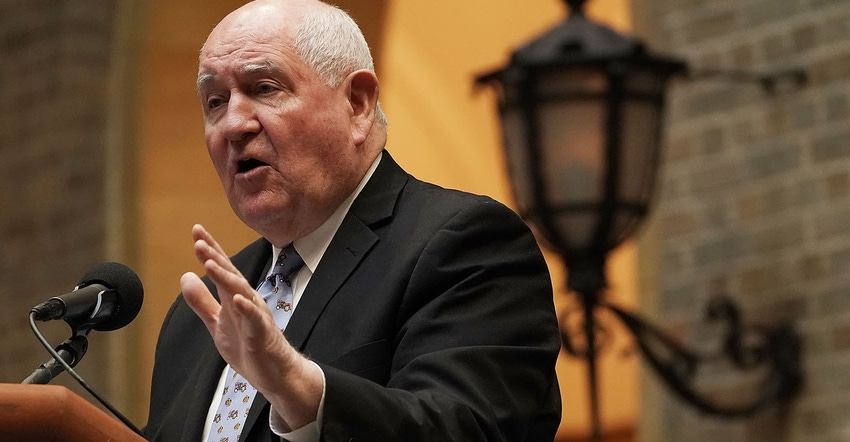October 22, 2018

More than a hundred organizations, coalitions and universities from 35 states submitted proposals to be the new home of the USDA Economic Research Service and the National Institute of Food and Agriculture.
In August, Agriculture Secretary Sonny Perdue announced that most ERS and NIFA personnel would be moving outside the nation’s capital by the end of 2019. Parties interested in being home to the agencies were invited to submit proposals by Oct. 15, 2018. In total 136 expressions of interest were received.
Related: Economic Research Service moving out of nation's capital
“The interest from across the country has been overwhelming as localities, universities, private entities, and elected officials realize the potential for their communities in become the new home for these two agencies,” Perdue said. “It is an old saying that not all wisdom resides in Washington, D.C., but it is gratifying to see so many folks step forward wanting to prove that to be the case. We look forward to working with Ernst & Young in examining all of the proposals and selecting the new locations.”
Related: Scientists, economists call for ERS, NIFA to stay in Washington, D.C.
States represented in the expressions of interest are: Alabama, Arkansas, Arizona, California, Colorado, Delaware, Florida, Georgia, Iowa, Illinois, Indiana, Kansas, Louisiana, Maryland, Michigan, Minnesota, Missouri, Montana, North Carolina, North Dakota, Nebraska, New York, Ohio, Oklahoma, Pennsylvania, South Carolina, South Dakota, Tennessee, Texas, Utah, Virginia, Washington, Wisconsin, West Virginia, and Wyoming.
Related: USDA extends deadline for proposals to house ERS, NIFA
The entities expressing interest in hosting EFS and NIFA include educational institutions, nonprofit organizations, state development agencies, county development agencies, municipalities, and for-profit entities. USDA has also received letters of support from a number of governors, members of Congress, farm-related organizations, and state and local officials. It is possible that ERS and NIFA will be co-located when their new homes are found. A yet-to-be-determined amount of staff from the two agencies will remain in the National Capital Region.
USDA intends to select the new location or locations by January 2019 and will retain a consultant with expertise in relocations.
USDA is undertaking the relocations for a variety of reasons. The move will place important USDA resources closer to many stakeholders, most of whom live and work far from the Washington, D.C. area. Additionally, taxpayers will realize significant savings on employment costs and rent, which will allow more employees to be retained in the long run, even in the face of tightening budgets. Finally, the plan will improve USDA’s ability to attract and retain highly qualified staff with training and interests in agriculture, many of whom come from land-grant universities.
Under the plan, no ERS or NIFA employees will be involuntarily separated. Every employee who wants to continue working will have an opportunity to do so, although that will mean moving to a new location for most. Employees will be offered relocation assistance and will receive the same base pay as before, and the locality pay for the new location. For those who are interested, USDA is seeking approval from the Office of Personnel Management and the Office of Management and Budget for both Voluntary Early Retirement Authority and Voluntary Separation Incentive Payments.
Perdue said 91% of USDA’s approximately 108,000 employees currently work outside of the Washington, D.C. region.
As part of the changes, ERS will be aligned with the Office of the Chief Economist under the Office of the Secretary. This represents a return to its previous positioning when ERS was aligned under the Assistant Secretary for Economics within the Office of the Secretary.
Perdue previously announced other significant reorganizations at USDA. In May 2017, USDA created the first-ever Undersecretary for Trade and Foreign Agricultural Affairs and reconstituted and renamed the new Farm Production and Conservation mission area, among other realignments. In addition, in September 2017, Perdue realigned a number of offices. Those actions involved innovation, consolidation, and the rearrangement of certain offices into more logical organizational reporting structures.
Source: USDA
You May Also Like




